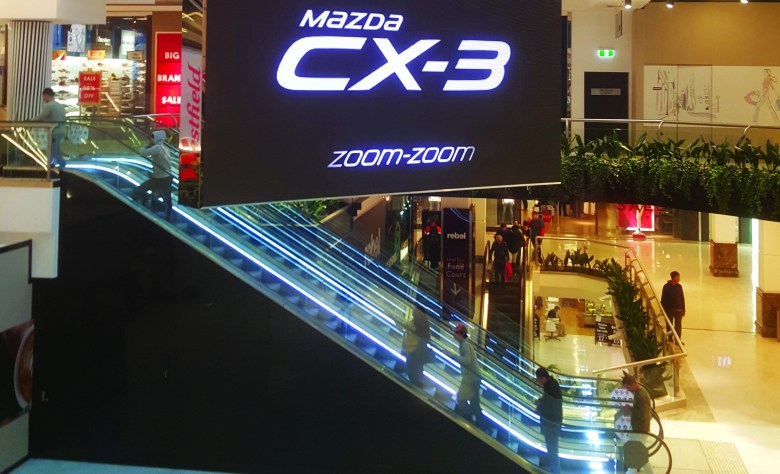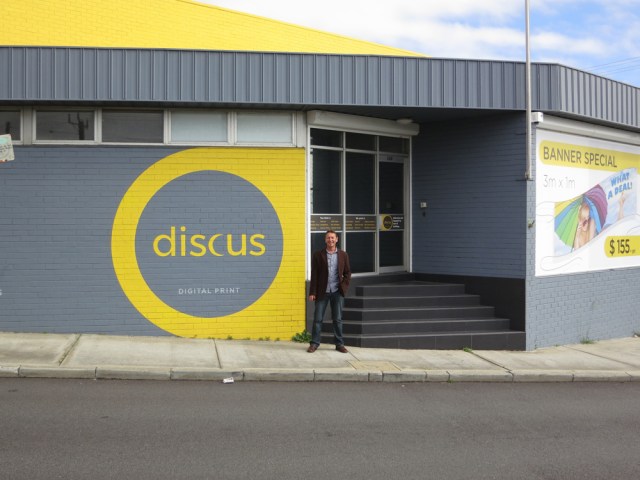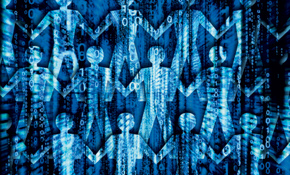
Everyone needs to adapt to change or face extinction.
As the most consistent feature in our modern industry landscape, change affects us constantly.
Certainly, the way we communicate and interact with the world continues to evolve. The internet, social media, and mobile connectivity combine to produce a significant impact on our preferences for how we like to access and receive information, as well as on our expectations of how quickly we receive it.
As the world becomes increasingly digital and digitised, it makes sense that advertisers see the attraction in giving consumers the same kind of experiences in the out of home market. Advertisers want to encourage innovation and they need to remain relevant in the modern marketplace. As such, the demand for outdoor digital billboards and interior screens in retail environments continues to increase.
However, this trend has more than one set of drivers. Aside from the desire of advertisers and retailers to become more connected to consumers, digital media represents other advantages and cost savings. It allows advertisers to change their content instantly, at the push of a button, from anywhere, and at any time.
They can quickly update their messages to appeal to different audiences, depending on the time of day and they can customise those messages for specific locations and regions.
This kind of technology and its almost seamless application, seems to completely eliminate the coordination and delivery costs that print and hard copy advertising requires. Without doubt, print now faces major pressure as the digital challenge becomes more ubiquitous.
Facing a digital challenge
QUITE rightly, you may ask, “Where does this leave print?”
Digital media has begun to displace some more traditional areas of print like outdoor billboards and interior point of sale. Some of these areas can expect to face a decline, though we do not yet know how sharp or how intense, in the use of printed media. As with anything, we need to consider the positives and negatives of each medium before we make decisions for the future.
Digital media appears dynamic and engaging and, in order for it to function well, it needs to keep up that appearance. In time, the proponents of digital advertising will come to understand the importance of continually developing appealing and creative content to the ongoing success of this advertising medium. But it requires a continuous investment; ongoing costs. Those engaged in this medium have begun to learn that they need more than rolling static visuals. The content needs to engage, inform, educate, and, at times, inspire consumers.
The ability to do all that depends greatly on the environment and dwell time that the consumer can devote to the campaign. In areas where the viewer has time to view the content, digital presentations have proven effectiveness. However, in areas where dwell time is considerably brief, print works much more effectively. Print possesses an innate ability to communicate a message in a much shorter time frame.
Digital media can offer a targeted approach to advertising. The same advertising space can communicate a number of different messages to specific audiences. Purveyors of digital advertising can upload new content instantly and they can manage it from a centralised control. They can customise the content, aligning it to the time of day and location. They can communicate new trends and promotions quickly within a retail environment.
On the other hand, print campaigns take time to print, deliver, and install and they can require more planning and coordination. Print offers one message to everyone for the whole time it is displayed. Again, advertisers will see this as an advantage or disadvantage depending on the message the advertiser wishes to communicate.
For outdoor advertising or interior spaces, an advertiser may prefer to dominate the space exclusively for a period of time rather than shared time slots on digital. With a print campaign this is possible and more cost effective.
Digital media requires a much higher initial investment cost. On top of that, servicing and maintenance costs have to rollover and they can easily continue to extract further costs from the campaign budget. Digital media also requires specific technical expertise and support, which also presents the campaign with another ongoing cost. Alternately, with print, the costs for delivery and installation when changing a campaign can appear higher but those costs tend to occur just the one time.
Marketers and advertisers need to consider long-term strategies and effectiveness to determine which medium will give a greater return on investment.
Digital screens tend to take up valuable retail space and advertisers find they offer less flexibility in their placement. Potential vandalism also concerns those who erect digital screens owing to the cost of expensive equipment. Conversely, advertisers can place print on virtually any interior surface without impacting on space.
Vandalism of print has a much lower cost impact and location assumes a greater significance as it impacts on visibility. Digital advertising on windows prone to sunlight can suffer asecause screens placed on them become difficult to read in high glare environments.
Choose the right media
DIGITAL media and print media may appear to have little in common but they can combine to make an effective campaign.
While digital media can deliver new and exciting opportunities for advertisers, both digital and print can find a place in the market. Benefits to advertisers can come from, and depend on, different locations for different purposes.
The correct choice or combination of media ultimately delivers the best communication to customers. To maintain its relevance in relation to advertising in this competitive environment, the print industry needs to continue to offer value and service with print.
New self-adhesive film technology continues to add value to what the print industry can offer. For exterior environments, films can function well, placed on a wide variety of surfaces including having them moulded into concrete and brick, which allows for greater flexibility in message placement without using any permanent fixtures.
For interior retail environments, any instore worker can easily apply a print without bubbles or wrinkles, using easy to apply films with bubble free, repositionable or dot adhesive technology to ensure that. This can save on installation costs and coordination.
For retail environments interested in animated content, rear projection films offer a real alternative to digital media screens. Rear projection films can bridge the gap between print media and digital. The fact that rear projections films are self-adhesive keeps the concept and the installation within the expertise of our industry.
Operators can produce rear projection films in any size or shape which offers a distinctive feature to digital promotions. They can use print to complement these rear projection films, incorporating them into printed displays.
Print and change up
WE work in the industry of providing visual communication solutions to our clients. While this traditionally has centred on print, as the industry changes, so must the solutions we offer to our clients.
Digital continues its ascendancy and looks likely to become a significant player in this market, a market that historically belonged to print. Print can complement digital media with print solutions and digital can complement printed campaigns with digital solutions. We can even offer digital solutions within our own business.
By embracing change that digital brings to the market, and considering how we can better service the retail market with print, we can offer a wider range of solutions and maintain business relationships within this sector.
Comment below to have your say on this story.
If you have a news story or tip-off, get in touch at editorial@sprinter.com.au.
Sign up to the Sprinter newsletter


